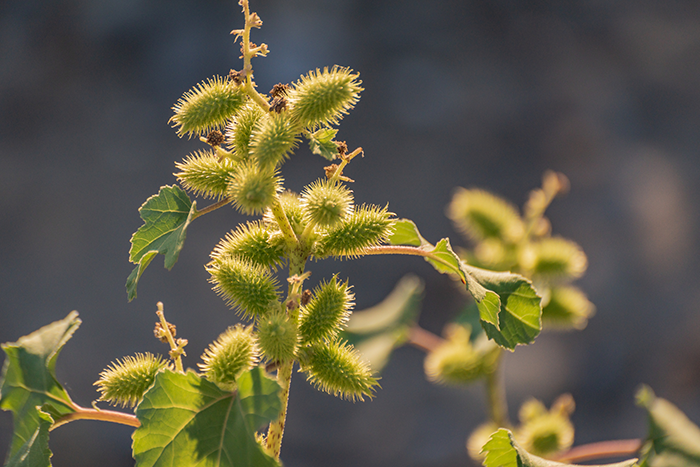
Dealing with annual weeds in pastures and hayfields is grueling enough before prickly plant parts are added to the mix. Stiff hairs, thorns, and spines on stems and leaves not only deter livestock from consuming them but could cause animals injury.
Christine Gelley with Ohio State University Extension explains the growth patterns and control methods for two prickly pests common in her region: cocklebur and horsenettle. The agriculture and natural resources educator adds that in addition to being prickly, these weeds can be poisonous.
Cocklebur is a summer annual weed with irregularly lobed leaves that have toothed margins and feel gritty like sandpaper. Cocklebur has green flowers and produces clusters of egg-shaped burs that can easily catch on animal hides, making them especially damaging to livestock with fiber value.
Horsenettle, on the other hand, has leaves and flowers that resemble that of a tomato, but the underside of the leaf midvein is lined with sharp spines. Horsenettle is a perennial weed, but Gelley writes it often goes unnoticed until mid-summer. While all plant parts are poisonous, she warns its yellow berries contain the highest concentration of toxins.
Beware of poisoning
Both weeds take advantage of bare soil and pop up around highly trafficked areas near feed, water, and mineral sources. Gelley says cocklebur and horsenettle thrive in full sun and disturbed soils where desirable forages cannot.
Livestock don’t find cocklebur and horsenettle particularly palatable, especially considering the hairy leaves and prickly plant tissue; however, Gelley suggests if animals are hungry enough, they may graze these toxic weeds.
It’s harder to prevent poisoning when cocklebur and horsenettle are present in hay. Gelley says the drying process can reduce toxin concentrations in plant tissues to a degree, but they will not be eliminated.
“The most common situations where animals are poisoned by toxic plants are a result of management decisions that lead to inadequate access to enough good forage to eat,” Gelley writes. “Overgrazed pastures or forced feeding of hay containing toxic plants are more often the cause of a poisoning than the plant itself.”
An animal can be more or less susceptible to toxicity depending on its species, age, and stage of production. Plant growth stage affects weed toxicity, too.
Control options
“While many producers hope to address weed challenges with strategic clipping of pastures, mowing is not very effective for cocklebur or horsenettle,” Gelley asserts. “This is due to their ability to flower and produce seed so low to the ground. Tillage can be a tempting practice to implement for control, but it will often stir up additional weed seed that is lying in wait in the soil bank,” she adds.
Chemical control options include herbicides containing clopyralid; 2,4-D; dicamba; aminopyralid; metsulfuron methyl; triclopyr; and glyphosate. All of these can be broadcasted or target sprayed on cocklebur, but Gelley suggests using the latter four on that list for horsenettle since it is susceptible to fewer herbicides.
Cultural control options include planting a summer annual forage to shade out weeds and create competition for water and nutrients. Gelley recommends using a no-till drill to seed warm-season grasses like sorghum-sudangrass or grazing corn.
“Multiple growing seasons of this practice may be required before a noticeable difference is seen,” she states. “Keeping up with soil fertility should always be a priority as well to allow desirable plants to thrive and reduce the window of opportunity for harmful plants such as these to establish.”

